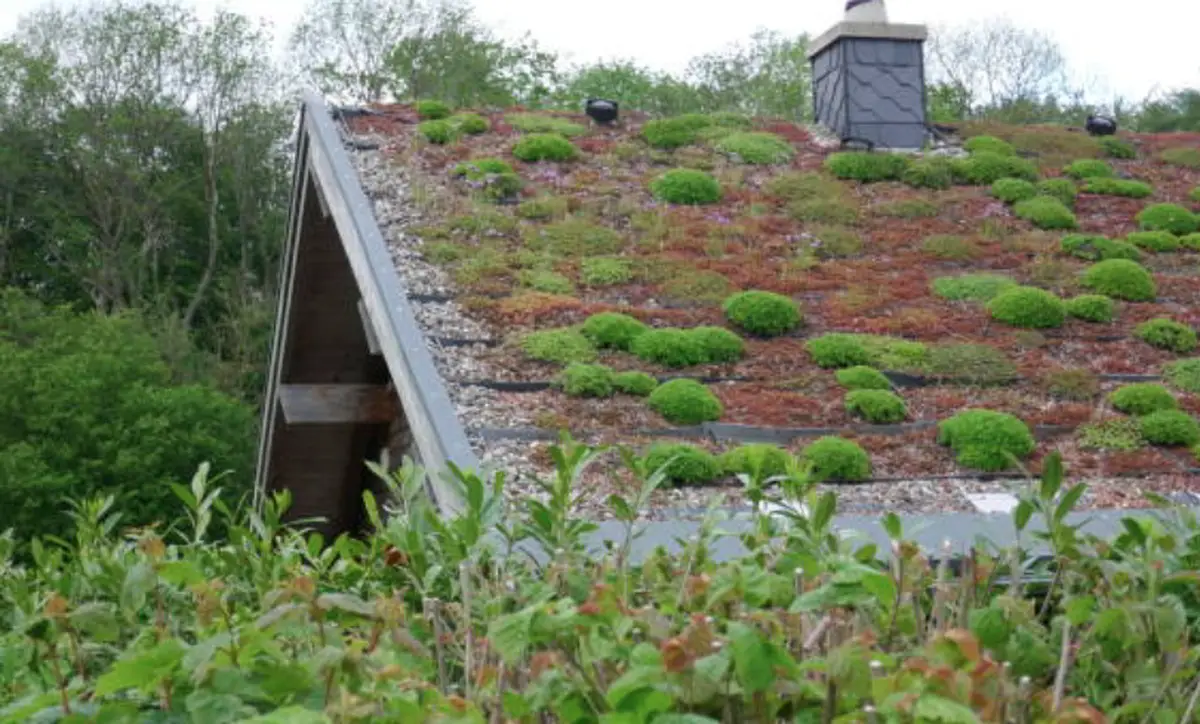Last Updated on: 4th April 2023, 04:29 pm
Green roofs and living roofs have gained considerable attention as eco-friendly solutions for urbna environments. These innovative roofing systems are designed to incorporate vegetation and improve the overall sustainability of buildings. In this article, we´ll introduce the concepts of green roofs and living roofs, discuss their benefits, and explore the different types available.
What exactly are green roofs and living roofs?
What is a green roof?
A green roof, also known as a vegetated roof or eco-roof, is a roof surface that has been purposely designed to support the growth of vegetation. These roofs are typically covered with a waterproof membrane, a growing medium, and specially seelcted plants.
What about living roofs?
Living roofs are similar to green roofs, but they often include a wider range of plant species, as well as other living organisms like insects and birds. This creates a more different and dynamic ecosystem on the roof, promoting biodviersity and ecological balance.
How do green roofs and living roofs differ in their types?
There are several types of green and living roofs, which can be broadly categorized into extensive, intensive, and semi-intensive systems. Each type offers unique benefits and has specific requirements in terms of installation, maintenance, and suitability for different biulding structures.
Why choose a green or living roof?
What environmental benefits do these roofs provide?
Green and living roofs offer numerous environmental benefits, such as improving air quality, reducing urban heat island effect, and providing stormwater management. hTey also promote biodiversity by creating habitats for different plant and animal species.
How can green and living roofs save you money?
Additionally to their ecological advantages, these roofs can also provide economic benefits. They can help lower energy costs by insulating buildings and reducing the need for heating and cooling. Additionally, green roofs can extend the lifespan of the roof membrnae by protecting it from weathering and ultraviolet radiation.
Are there aesthetic and recreational advantages?
Yes, green and living roofs can also contribute to improved aesthetics and offer recreational opportunities. They can create visually appealing green spaces, improve mnetal well-being, and provide opportunities for gardening, relaxation, and social interaction.
Exploring the types of green roofs
What are extensive green roofs?
Extensive green roofs are characterized by their lightweight design and low-maintenance vegetation, such as sedums, mosses, and grasses. These orofs are suitable for a wide range of buildings and require minimal maintenance, making them an attractive option for many property owners.
What about intensive green roofs?
Intensive green roofs, also known as roof gardens, support a greater variety of plant species, including trees and shrubs. They typically require a deeper growing medium, more structural support, and regular maintenance. These roofs can serve as recreational spaces or veen urban farms.
What is a semi-intensive green roof?
A semi-intensive green roof is a hybrid of extensive and intensive systems, incorporating elements of both types. They generally support a wider variety of plants than extenisve roofs but require less maintenance than intensive roofs. This type of green roof is ideal for those who want a different ecosystem without the high maintenance demands of an intensive system.
Key factors to consider when choosing a green roof system
How does climate impact green roof selection?
Climate plays a pertinent role in determining the appropriate green roof system for a building. Factors like temperature, precipitation, and sunlight availability affect the choice of plants and growing medium. It’s pertinent to select a system and lpant species that are well-adapted to the local climate to be sure the green roof’s success.
What should you know about roof structure and green roofs?
The structural capacity of a building’s roof is another pertinent factor to consider when planning a green roof. Heavier systems, such as intensive green roofs, may require additional structural support. It’s pertinent to consult with a structural engineer to determien the feasibility of installing a green roof on your building.
How do maintenance requirements differ among green roof types?
Maintenance requirements vary depending on the type of green roof system installed. Extensive green roofs typically require minimal maintenance, while intnesive and semi-intensive systems demand more frequent attention. Consider the amount of time and effort you’re willing to dedicate to upkeep when choosing a green roof system.
What budget considerations should be kept in mind?
Installation and maintenance costs can vary significantly between green roof systems. While extensive green roofs are generally more affordable, intensive systems can be more costly due to the additional structural support and maintenance required. Be sure to factor in the long-term costs associated with your chosen green roof system.
Potential challenges and drawbacks of green roofs
What are the installation and maintenance costs of green roofs?
One potential drawback of green roofs is the initial installation cost, which can be higher than that of traditional roofing systems. Additionally, ongoing maintenance costs, such as irrigation and fertilization, should be considered. However, these expenses may be ofsfet by the energy savings and extended roof lifespan that green roofs can provide.
Are there structural concerns with green roofs?
Yes, structural concerns can be a challenge when considering a green roof. The additional weight of the growing medium and plants can place stress on the building’s roof structure. It’s pertinent to consult a structural engineer to be sure the roof can spuport the chosen green roof system.
Is water damage a concern for green roofs?
While green roofs can help manage stormwater runoff, there is still a potential for water damage if the waterproof membrane is not properly installed or maintained. To minimize this risk, work with experienced professionals and conduct regulra inspections to be sure the integrity of the waterproofing system.
